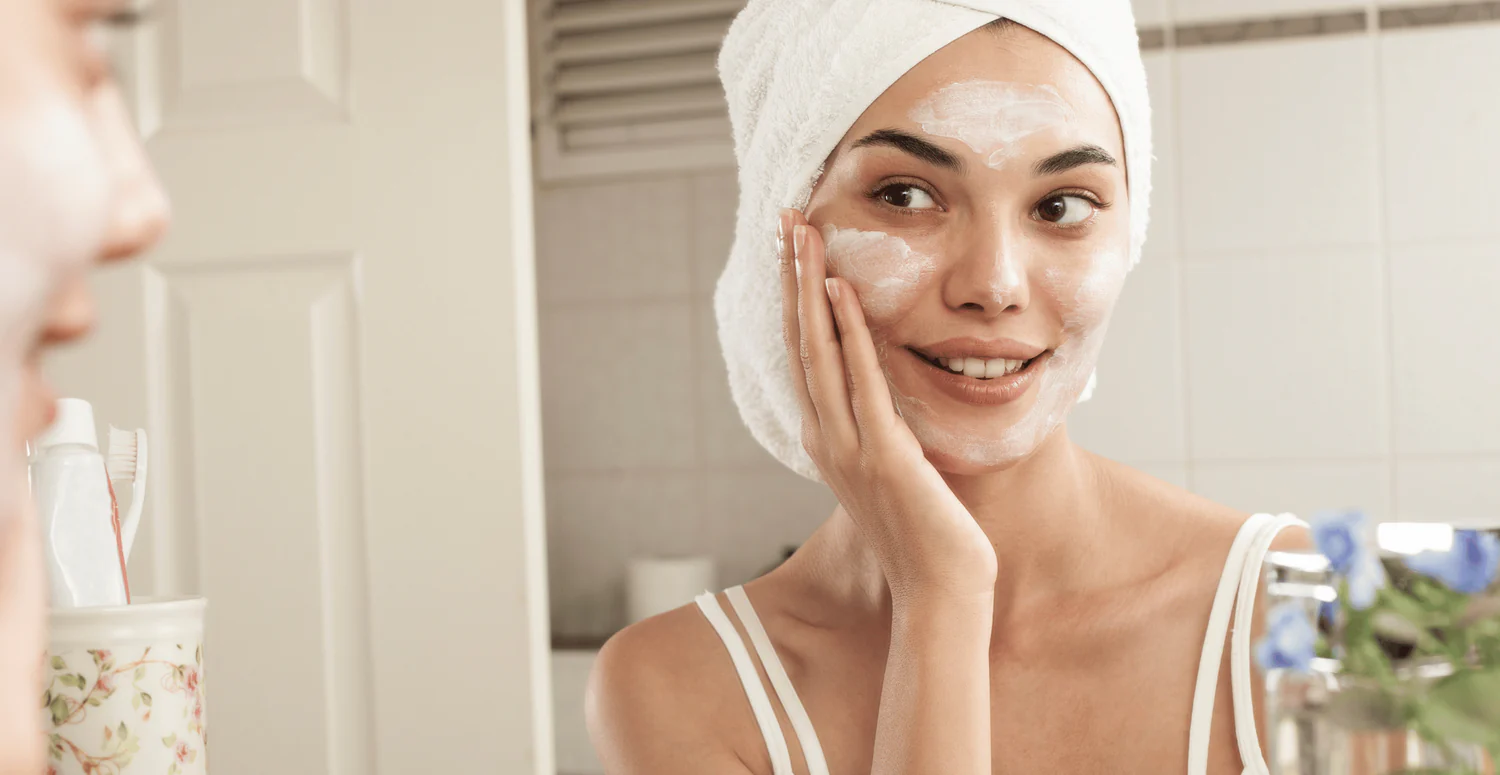The Ultimate Guide to Creating an Effective Skin Care Routine
Having a well-designed skin care routine is essential for maintaining healthy, radiant skin. Whether you’re a skincare novice or looking to refine your existing regimen, this comprehensive guide will walk you through the key steps and considerations for developing a skin care routine tailored to your unique needs.
Understanding Your Skin Type
Before diving into products and techniques, it’s crucial to understand your skin type. This knowledge forms the foundation of an effective skincare routine.
Common Skin Types:
- Normal
- Dry
- Oily
- Combination
- Sensitive
To determine your skin type, observe how your skin behaves throughout the day and how it reacts to different products. If you’re unsure, consult with a dermatologist for a professional assessment.
The Basic Steps of a Skin Care Routine
A solid skincare routine typically consists of the following steps:
- Cleansing
- Toning
- Treating
- Moisturizing
- Sun Protection
Let’s explore each step in detail.
1. Cleansing: The Foundation of Skin Care
Cleansing is the first and arguably most important step in any skincare routine. It removes dirt, oil, makeup, and other impurities that accumulate on your skin throughout the day.
Tips for Effective Cleansing:
- Choose a gentle, non-irritating cleanser appropriate for your skin type
- Use lukewarm water, as hot water can strip natural oils from your skin
- Cleanse twice daily – morning and night
- Be gentle when massaging the cleanser into your skin
- Rinse thoroughly to remove all traces of cleanser
2. Toning: Balancing and Prepping
Toning helps to balance your skin’s pH, remove any remaining impurities, and prepare your skin for the next steps in your routine.
Benefits of Toning:
- Tightens and refines pores
- Restores skin’s pH balance
- Adds a layer of hydration
- Enhances the absorption of subsequent skincare products
Choose an alcohol-free toner to avoid drying out your skin. Apply with a cotton pad or your clean hands, gently patting it into your skin.
3. Treating: Targeting Specific Skin Concerns
This step involves applying serums or treatments that address your specific skin concerns, such as:
- Acne
- Hyperpigmentation
- Fine lines and wrinkles
- Dullness
- Uneven texture
Popular treatment ingredients include:
- Vitamin C for brightening and antioxidant protection
- Hyaluronic acid for hydration
- Retinoids for anti-aging and acne
- Niacinamide for pore refinement and oil control
- Salicylic acid for acne and exfoliation
Apply treatments to clean, slightly damp skin for optimal absorption.
4. Moisturizing: Hydration is Key
Moisturizing is crucial for all skin types, even oily skin. It helps to:
- Lock in hydration
- Strengthen the skin barrier
- Prevent water loss
- Plump and smooth the skin
Choose a moisturizer that suits your skin type:
- Lightweight gel or lotion for oily skin
- Rich cream for dry skin
- Fragrance-free options for sensitive skin
Apply moisturizer to slightly damp skin to enhance absorption.
5. Sun Protection: The Ultimate Anti-Aging Step
Sun protection is non-negotiable in any skincare routine. UV rays are responsible for up to 90% of visible skin aging, as well as increasing the risk of skin cancer.
Sunscreen Tips:
- Use a broad-spectrum sunscreen with at least SPF 30
- Apply generously to all exposed skin
- Reapply every 2 hours, or more frequently if swimming or sweating
- Don’t forget often-missed areas like ears, neck, and hands
Consider using a moisturizer with built-in SPF for daily use, but use a separate sunscreen for extended sun exposure.
Building Your Routine: Morning vs. Night
While the basic steps remain the same, your morning and nighttime routines may differ slightly.
Morning Routine:
- Gentle cleanse
- Tone (optional)
- Vitamin C serum or other antioxidant treatment
- Lightweight moisturizer
- Sunscreen
Night Routine:
- Double cleanse (oil-based cleanser followed by water-based cleanser)
- Tone
- Treatment serums (e.g., retinoids, exfoliating acids)
- Eye cream
- Rich moisturizer or night cream
- Face oil (optional, for extra nourishment)
Advanced Skin Care Techniques
Once you’ve established a basic routine, you might want to incorporate some advanced techniques for enhanced results.
Exfoliation: Revealing Fresh, Glowing Skin
Exfoliation removes dead skin cells, unclogs pores, and promotes cell turnover. There are two types:
- Physical exfoliation: Using scrubs or tools to manually remove dead skin
- Chemical exfoliation: Using acids (AHAs, BHAs) to dissolve dead skin cells
Start with once-weekly exfoliation and gradually increase frequency as tolerated. Be cautious not to over-exfoliate, which can damage your skin barrier.
Face Masks: Targeted Treatment Boost
Face masks can provide an extra boost of nutrients and address specific skin concerns. Popular types include:
- Clay masks for oil control and pore cleansing
- Sheet masks for hydration and brightening
- Overnight masks for intense moisturization
Use masks 1-2 times per week, or as directed by the product instructions.
Facial Oils: Nourishment and Glow
Contrary to popular belief, facial oils can benefit all skin types when used correctly. They can:
- Provide intense nourishment
- Balance oil production
- Enhance your skin’s natural glow
Apply a few drops of facial oil as the last step in your nighttime routine, or mix with your moisturizer for an added boost.
Tailoring Your Routine to Your Skin Type
While the basic steps of a skincare routine remain consistent, the specific products and techniques may vary depending on your skin type.
For Dry Skin:
- Use cream-based cleansers
- Focus on hydrating ingredients like hyaluronic acid and glycerin
- Layer multiple hydrating products
- Consider using a facial oil
For Oily Skin:
- Use gel or foam cleansers
- Incorporate oil-control ingredients like niacinamide and salicylic acid
- Use lightweight, non-comedogenic moisturizers
- Don’t skip moisturizer – it’s essential for balancing oil production
For Combination Skin:
- Use different products on different areas of your face as needed
- Focus on balancing products that hydrate without adding excess oil
- Consider multi-masking to address different concerns simultaneously
For Sensitive Skin:
- Choose fragrance-free, hypoallergenic products
- Patch test new products before full application
- Focus on gentle, soothing ingredients like aloe vera and chamomile
- Avoid harsh exfoliants and potentially irritating active ingredients
Addressing Specific Skin Concerns
Acne-Prone Skin:
- Use non-comedogenic products
- Incorporate salicylic acid or benzoyl peroxide for spot treatment
- Don’t over-dry your skin, as this can lead to increased oil production
- Consider using a retinoid to help with cell turnover and prevent clogged pores
Aging Skin:
- Focus on hydration and plumping ingredients like hyaluronic acid
- Use retinoids to stimulate collagen production and reduce fine lines
- Incorporate antioxidants to protect against free radical damage
- Don’t neglect the neck and décolletage area
Hyperpigmentation:
- Use brightening ingredients like vitamin C, kojic acid, or niacinamide
- Always use sun protection to prevent further darkening
- Consider professional treatments like chemical peels for stubborn spots
The Importance of Consistency
Consistency is key when it comes to skincare. It can take 4-6 weeks to see noticeable results from a new routine or product. Stick with your routine and be patient – good skin takes time!
Lifestyle Factors Affecting Skin Health
Remember that skincare isn’t just about what you put on your face. Several lifestyle factors can significantly impact your skin health:
- Diet: Eat a balanced diet rich in fruits, vegetables, and omega-3 fatty acids
- Hydration: Drink plenty of water throughout the day
- Sleep: Aim for 7-9 hours of quality sleep each night
- Stress management: Practice stress-reduction techniques like meditation or yoga
- Exercise: Regular physical activity improves circulation and promotes a healthy glow
When to Seek Professional Help
While a good at-home skincare routine can work wonders, some skin concerns may require professional intervention. Consider consulting a dermatologist if you experience:
- Persistent acne that doesn’t respond to over-the-counter treatments
- Sudden changes in skin texture or appearance
- Suspicious moles or skin growths
- Severe sensitivity or allergic reactions to skincare products
- Chronic skin conditions like eczema or rosacea
Embracing Your Unique Skin
Every person’s skin is unique, and what works for one may not work for another. It’s essential to listen to your skin and adjust your routine as needed. Don’t be afraid to experiment with different products and techniques to find what works best for you.
For those with melanin-rich skin, finding products specifically formulated for your skin type can make a significant difference. Explore Melanin-Rich Skincare options to discover products tailored to your unique needs.
Conclusion
Creating an effective skincare routine is a journey of self-discovery and care. By understanding your skin type, addressing your specific concerns, and consistently following a well-designed routine, you can achieve and maintain healthy, radiant skin. Remember to be patient, stay consistent, and most importantly, enjoy the process of caring for your skin. Your skin is unique, and with the right care, its natural beauty will shine through.







